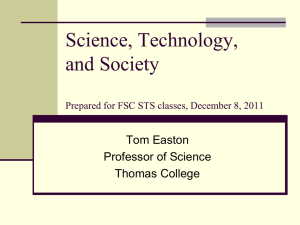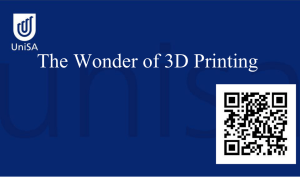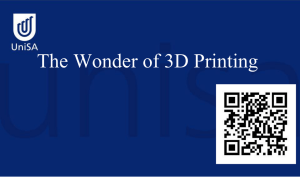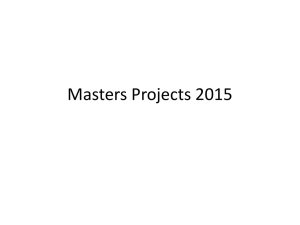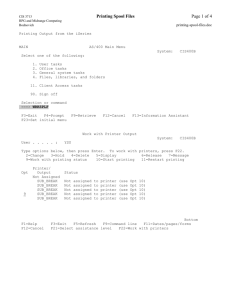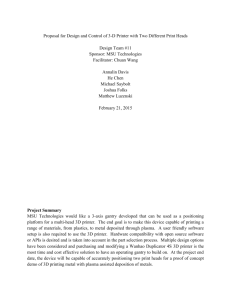УДК 735.29 3D-PRINTING TECHNOLOGY IN CONSTRUCTION
advertisement
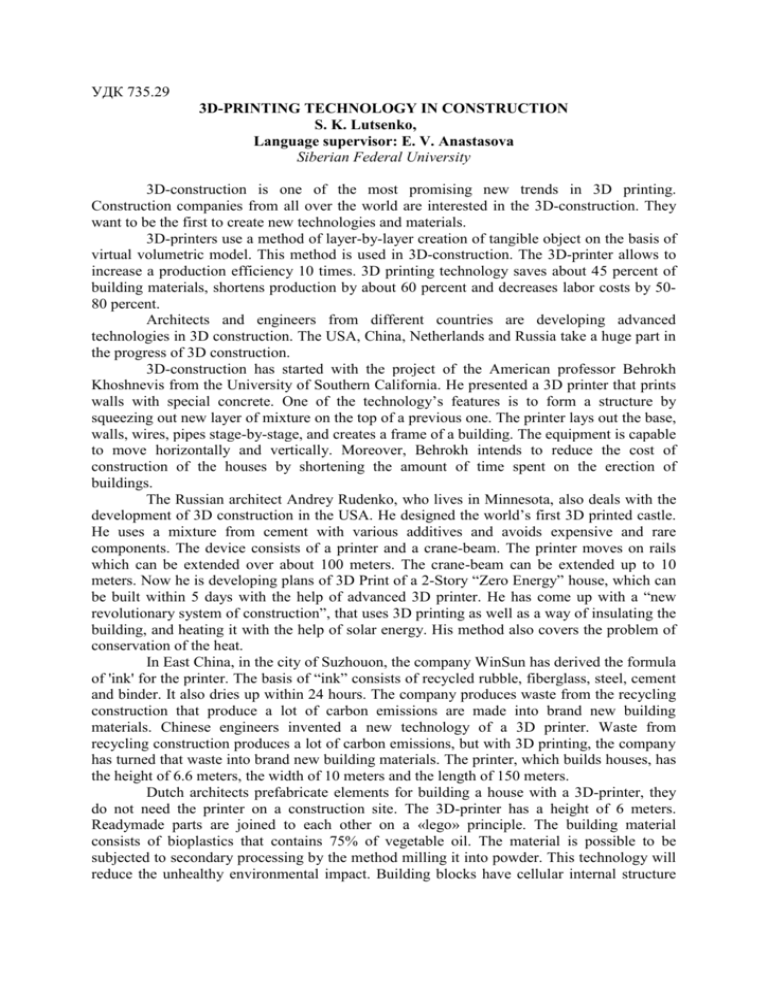
УДК 735.29 3D-PRINTING TECHNOLOGY IN CONSTRUCTION S. K. Lutsenko, Language supervisor: E. V. Anastasova Siberian Federal University 3D-construction is one of the most promising new trends in 3D printing. Construction companies from all over the world are interested in the 3D-construction. They want to be the first to create new technologies and materials. 3D-printers use a method of layer-by-layer creation of tangible object on the basis of virtual volumetric model. This method is used in 3D-construction. The 3D-printer allows to increase a production efficiency 10 times. 3D printing technology saves about 45 percent of building materials, shortens production by about 60 percent and decreases labor costs by 5080 percent. Architects and engineers from different countries are developing advanced technologies in 3D construction. The USA, China, Netherlands and Russia take a huge part in the progress of 3D construction. 3D-construction has started with the project of the American professor Behrokh Khoshnevis from the University of Southern California. He presented a 3D printer that prints walls with special concrete. One of the technology’s features is to form a structure by squeezing out new layer of mixture on the top of a previous one. The printer lays out the base, walls, wires, pipes stage-by-stage, and creates a frame of a building. The equipment is capable to move horizontally and vertically. Moreover, Behrokh intends to reduce the cost of construction of the houses by shortening the amount of time spent on the erection of buildings. The Russian architect Andrey Rudenko, who lives in Minnesota, also deals with the development of 3D construction in the USA. He designed the world’s first 3D printed castle. He uses a mixture from cement with various additives and avoids expensive and rare components. The device consists of a printer and a crane-beam. The printer moves on rails which can be extended over about 100 meters. The crane-beam can be extended up to 10 meters. Now he is developing plans of 3D Print of a 2-Story “Zero Energy” house, which can be built within 5 days with the help of advanced 3D printer. He has come up with a “new revolutionary system of construction”, that uses 3D printing as well as a way of insulating the building, and heating it with the help of solar energy. His method also covers the problem of conservation of the heat. In East China, in the city of Suzhouon, the company WinSun has derived the formula of 'ink' for the printer. The basis of “ink” consists of recycled rubble, fiberglass, steel, cement and binder. It also dries up within 24 hours. The company produces waste from the recycling construction that produce a lot of carbon emissions are made into brand new building materials. Chinese engineers invented a new technology of a 3D printer. Waste from recycling construction produces a lot of carbon emissions, but with 3D printing, the company has turned that waste into brand new building materials. The printer, which builds houses, has the height of 6.6 meters, the width of 10 meters and the length of 150 meters. Dutch architects prefabricate elements for building a house with a 3D-printer, they do not need the printer on a construction site. The 3D-printer has a height of 6 meters. Readymade parts are joined to each other on a «lego» principle. The building material consists of bioplastics that contains 75% of vegetable oil. The material is possible to be subjected to secondary processing by the method milling it into powder. This technology will reduce the unhealthy environmental impact. Building blocks have cellular internal structure that at the end of construction will be filled by foam. The structure can be compared with concrete by weight and can give support to the house. Currently, Russian architects of the State Technical University in the city of Tver are developing a material that can be used for architectural 3D printing. The idea of the Russian architects differs from others because of mixture that consists of the water resistant gypsum and solid waste, which provides instant hardening. It can be used in special structures, which will shape the structural elements of the complete buildings. In this case, working with a mixture of gypsum and MSW (Municipal Solid Waste), the cost of erection and the construction speed are reduced. This technology will give construction companies the possibility to build low-cost houses. Each of these systems has advantages and disadvantages. But we can mention general advantages of 3D-printing in construction. They are the following: Faster and accurate construction – a 3D printer transfers the digital model into a physical one; errors that arise can only be due to faults in the digital model or the materials that are used. The condensed time frame and automation will reduce the man hours required for each project, both for direct labor and supervision; Reduced labour cost – a 3D printer does most of the work with minimal human effort; Reduced waste generation – components can be printed to order during the construction phase; those that are not used can be recycled; Reduced health and safety risks – by replacing dangerous workplaces on more safe environments, for example to programming; Environmental – recycled products can be used to produce the construction materials used in 3D printers. As technology develops, there are not only advantages, but also disadvantages. Such as: Shortage of workplaces – reduced employee numbers in the industry, since the 3D printer does most of the work; A limited number of materials can be used, since the same printer might not be able to print the required multiple materials; Transportation – getting the printers for large in situ components to and from the site; Storage of the printer on site; Higher risks – any errors in the digital model can result in problematic issues on site during the printing/construction phase; Falling of demand – conventional product manufacturing companies and plant renting companies could suffer as their products are no longer required. The potential of 3D printing technology for the construction industry is significant. If it continues to be developed, it may revolutionize the construction process, resulting in acceleration and less expense. However, as described above, the technology implementation is not possible without challenges. Solving them makes it progress and develop. The growth rate of technological progress is very high nowadays and we cannot reject the thought that soon we will be able to see 3D construction in the streets of our cities.




